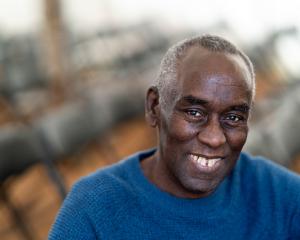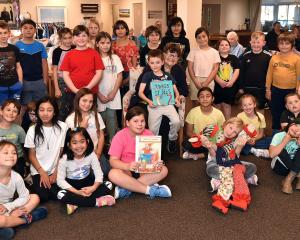
SEEING FURTHER
The story of science and the Royal Society
Ed. Bill Bryson
Harper Press, $54.99, hbk
In this truly superb volume, 22 well-known writers roam broadly over the scientific discoveries of the past three and a-half centuries.
The unifying theme is the history of the Royal Society since its inception in London in 1660, the title Royal being bestowed by King Charles II later.
The Royal Society of London for the Improvement of Natural Knowledge has for centuries been the pre-eminent learned body representing the most distinguished scientists of Britain and the Commonwealth, together with honoured foreign Fellows.
Few (about 1400) can aspire to the magic letters "FRS" after their name, after which nothing more is necessary.
Georgina Ferry, writing about modern structural biology, tells how Dorothy Hodgkin, having solved the structure of penicillin in 1945 (almost the only antibiotic at the time), was told by her friend J. D. Bernal FRS that she merited the Nobel Prize.
When she said she would rather be an FRS, he replied laconically "That's more difficult".
Typically of the book, Georgina Ferry's chapter traverses a massive field encompassing proteins, DNA, biochemistry, physics and computer modelling, to name but a few.
The beauty of all of the presentations lies in the interweaving of the history and development of each theme, its driving relevance, the leading scientists involved, their personalities and thought processes.
Good science flows from good people working with good people on genuinely fascinating questions.
The pull of a question is far more creative than the push of a project.
Repeatedly the message surfaces, often subliminally, that huge advances in science frequently flow from a scientist's ability to understand two or more seemingly unrelated disciplines.
Crystals and enzymes.
Electromagnetic radiation and genetics.
Algebra and the night sky.
The contribution by Margaret Atwood, commentator and novelist, is wonderfully original: "Of the Madness of Mad Scientists: Jonathan Swift's Grand Academy".
A time existed, sadly long past, when youngsters gravitated towards science by generating stinking poisonous gases, or detonating the potting shed in the pursuit of the perfect firework.
Looking back, did one have to be mad to prefer such mind-expanding activities to today's inane TV and stupefying computer "games"?
The author explores the tongue-in-cheek intent of Swift, perhaps unnoticed by many of his readers - was the name Gulliver a shade close to "gullible"?
Essays by renowned authors explore numerous aspects of science in a highly readable and entertaining manner.
Uniformly their brilliance is to hold equally the outsider looking in to science, or the practised scientist looking out.
Interdisciplinary and historical boundaries are sliced and diced, as occasionally are spiritual and ecclesiastical ones, as in Margaret Wertheim's chapter "Lost In Space: The Spiritual Crisis of Newtonian Cosmology" (although I'm told that Captain Kirk of the Starship Enterprise never once spoke the supposedly immortal line, "Beam me up, Scotty!").
• Clive Trotman is a science writer and international arbitrator












